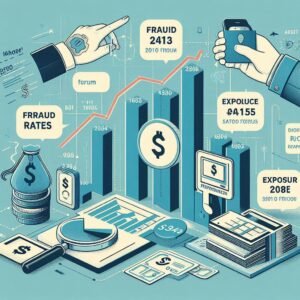What is a deepfake!
How might it affect your life? Here’s what matters

Introduction
Deepfake refers to synthetic audio, image, or video content created by AI. It leverages deep learning techniques especially GANs (generative adversarial networks) to generate content that mimics real people’s faces, voices, expressions, or movements Education Week+15Wikipedia+15Kaspersky+15SentinelOne. The name itself comes from “deep learning” and “fake.” It first gained notoriety in 2017 when users started swapping celebrity faces into pornographic videos on Reddit Le Monde.fr.
These days, deepfakes span many forms voice calls, manipulated video clips, altered photos. Making sense of them is central to staying safe and informed.
How Deepfakes Work
Under the hood, deepfake systems typically use GANs. One network generates synthetic media, and another evaluates its authenticity. The result is increasingly realistic content over time MIT Sloan. High‑end models can synthesize senior executives’ speech or fabricate entire video calls in real time.

Types of Deepfakes
-
Video face-swap: swapping one person’s face onto another.
-
Voice cloning: using minimal voice samples to replicate someone’s speech pattern.
-
Text‑to‑image/video: generating novel visuals via AI prompts, now blurring the line with traditional deepfakes. Below are the some link for more details
- Link- 1
- Link – 2
- Link – 3
Applications range from harmless social media parody to high‑risk fraud or defamation.
Scale and Statistics
-
By 2025, researchers expect up to 8 million deepfake videos online, up from thousands mere years ago views4you.com.
-
In 2023, deepfake audio and video fraud resulted in an estimated $12 billion in global losses, projected to rise to nearly $23 billion by 2025 views4you.com.
-
In North America, deepfake fraud spiked by 1,740% in 2022; in Asia‑Pacific, 1,530% security.org.
-
According to a UK survey, about 15% of people reported exposure to harmful deepfakes, and over 90% were very or somewhat concerned about their societal implications arXiv.
-
Another survey found that 60% of consumers encountered a deepfake video in the past year; only 15% haven’t seen one at all eftsure.com.

Real‑World Harms
Fraud and Financial Loss
Criminals impersonate CEOs, executives, loved ones to trick people into sending money or sharing sensitive info. These scams used deepfake voice or video to convince victims that they were dealing with a trusted person Wikipediamea-integrity.com.
Sextortion and Non‑Consensual Pornography
The majority of deepfake videos 98% are pornographic, often targeting women or public figures without consent views4you.comWikipedia. Victims suffer emotional trauma, reputational damage, or legal consequences. In Australia, actors protested AI use of their likeness without permission; individuals have faced jail time for sharing deepfake porn mea-integrity.comAdelaide NowWikipedia.
Political Manipulation
Deepfakes have been used to impersonate politicians, spread disinformation, or influence elections. Fake audio of campaign messages or doctored speeches appeared on social media, aiming to sway public opinion rochester.eduWikipediateenvogue.com.
Personal Privacy and Identity
Your image or voice can be cloned without permission. It’s hard to seek legal redress because identity theft laws don’t always cover non‑financial or psychological harms Wikipedia.
Personal Impact: Why It Matters to You
Trigger 1: Trust
You can no longer believe what you see or hear on video. Even straightforward video chats or voice calls become suspect.
Trigger 2: Exposure
Deepfakes are everywhere. If you’re online, you’re likely seen a manipulated video even if it wasn’t flagged. That erodes trust in all content eftsure.com.
Trigger 3: Vulnerability
You might be targeted by scams, defamation, or identity theft. If you’re a professional, your reputation could be attacked via fake content. Even private individuals can be manipulated.
Trigger 4: Ethical Anxiety
Knowing there’s content out there posing as you, or images of others you know that you can’t control it creeps in as a real emotional weight.
How Deepfakes Affect Daily Life
Work and Finance
Imagine a fake video call with your boss instructing a wire transfer. Or a fraudster impersonating you in a Zoom meeting to gain access to data. Corporate security teams now consider deepfakes part of the phishing risk matrix regulaforensics.comKeepnet Labs.
News and Social Media
Counternarratives or scandals can be manufactured. Even media professionals must double-check sources and use forensic tools to detect AI alterations.
Relationships
A voice clone of a loved one appearing in an urgent distress call? Scammers have used that. Experts suggest agreeing on secret verification words to guard against impersonations the-sun.com.
Self‑image and consent
Your photo might be used to generate fake content without your permission. Victims of non‑consensual deepfakes report emotional trauma, ostracism, and helplessness often with no legal backup Adelaide Nowpeople.com.
Detection and Defense
Spotting the Signs
-
Look for visual glitches blurred hair, odd lighting, mismatched lip movements, nonsensical backgrounds uit.stanford.edurochester.edu.
-
Watch audio for unnatural cadence or tone shifts.
-
Source-check content compare to official channels or reach out to the person involved.

Tech Tools
Researchers and companies are developing detection algorithms that recognize inconsistencies. Microsoft, MIT, and other labs lead the charge; tools analyze patterns only AI-generated media exhibits WikipediaMIT Sloanuit.stanford.edu.
Legal and Policy Response
Legislation is emerging. South Korea now criminalizes non-consensual deepfake pornography with jail up to five years and significant fines Wikipedia. In the U.S., bills like TAKE IT DOWN Act seek to mandate swift removal of manipulated images of minors or victims Wikipedia. Courts are debating laws relating to political deepfakes recently, a California law was struck down over First Amendment issues Politico.
Education and Awareness
Media literacy is essential. From schools to workplaces, people must learn to question what they see. Awareness reduces impact. Surveys show users are usually not equipped to identify deepfakes on their own arXiv+1.
Bottom Line
Deepfakes are no longer sci‑fi. They’re real. They spread fast, cost billions, and damage individuals. You face risks not just from high-profile political hoaxes, but from scams, identity theft, emotional harm. Your trust in media, conversations, and even self‑image is at stake.
But there’s agency here. You can
-
learn to question what you see,
-
adopt simple habits like verification words in voice calls,
-
support detection tools and transparency laws,
-
and stay informed.
Knowledge is not just power it’s protection. Let me know if you want help picking detection software, integrating verification practices at your workplace, or crafting media literacy sessions.
